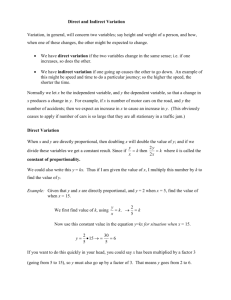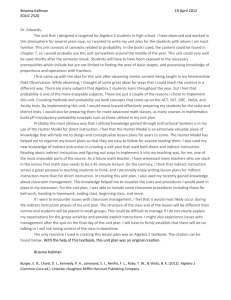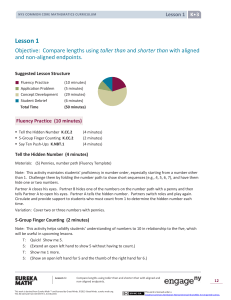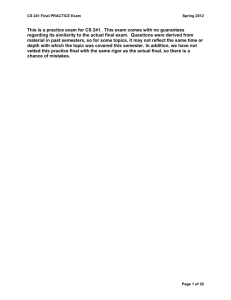Grade 1 Mathematics Module 3, Topic A
advertisement
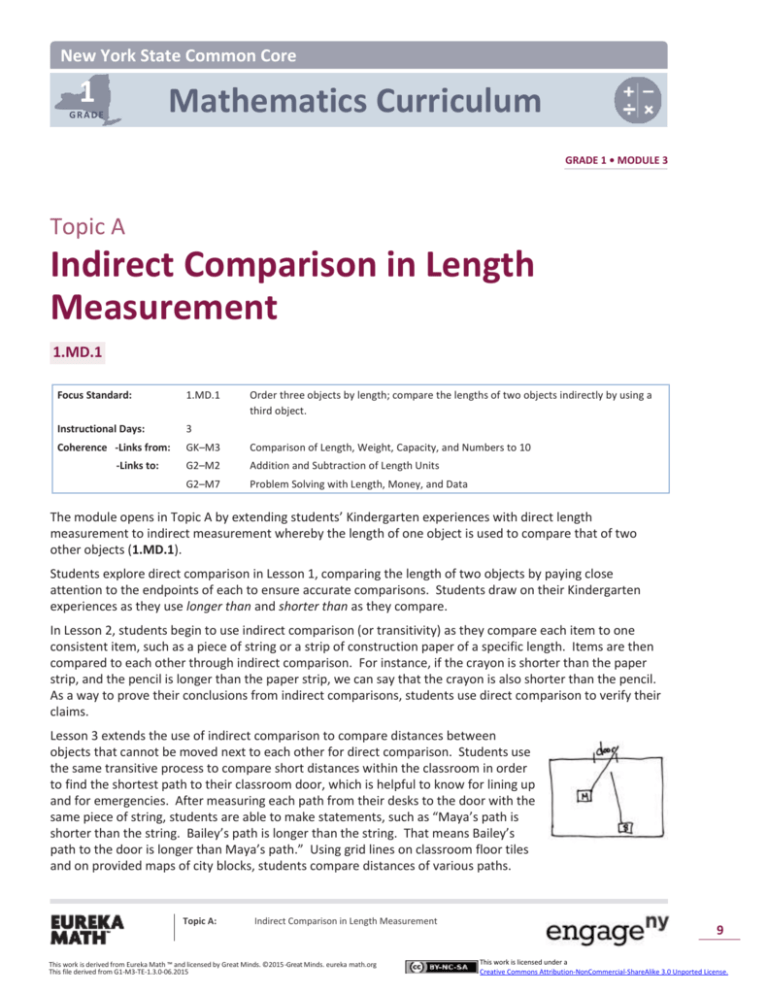
New York State Common Core 1 Mathematics Curriculum GRADE GRADE 1 • MODULE 3 Topic A Indirect Comparison in Length Measurement 1.MD.1 Focus Standard: 1.MD.1 Instructional Days: 3 Coherence -Links from: GK–M3 Comparison of Length, Weight, Capacity, and Numbers to 10 G2–M2 Addition and Subtraction of Length Units G2–M7 Problem Solving with Length, Money, and Data -Links to: Order three objects by length; compare the lengths of two objects indirectly by using a third object. The module opens in Topic A by extending students’ Kindergarten experiences with direct length measurement to indirect measurement whereby the length of one object is used to compare that of two other objects (1.MD.1). Students explore direct comparison in Lesson 1, comparing the length of two objects by paying close attention to the endpoints of each to ensure accurate comparisons. Students draw on their Kindergarten experiences as they use longer than and shorter than as they compare. In Lesson 2, students begin to use indirect comparison (or transitivity) as they compare each item to one consistent item, such as a piece of string or a strip of construction paper of a specific length. Items are then compared to each other through indirect comparison. For instance, if the crayon is shorter than the paper strip, and the pencil is longer than the paper strip, we can say that the crayon is also shorter than the pencil. As a way to prove their conclusions from indirect comparisons, students use direct comparison to verify their claims. Lesson 3 extends the use of indirect comparison to compare distances between objects that cannot be moved next to each other for direct comparison. Students use the same transitive process to compare short distances within the classroom in order to find the shortest path to their classroom door, which is helpful to know for lining up and for emergencies. After measuring each path from their desks to the door with the same piece of string, students are able to make statements, such as “Maya’s path is shorter than the string. Bailey’s path is longer than the string. That means Bailey’s path to the door is longer than Maya’s path.” Using grid lines on classroom floor tiles and on provided maps of city blocks, students compare distances of various paths. Topic A: Indirect Comparison in Length Measurement This work is derived from Eureka Math ™ and licensed by Great Minds. ©2015 -Great Minds. eureka math.org This file derived from G1-M3-TE-1.3.0-06.2015 9 This work is licensed under a Creative Commons Attribution-NonCommercial-ShareAlike 3.0 Unported License. Topic A 1•3 NYS COMMON CORE MATHEMATICS CURRICULUM A Teaching Sequence Toward Mastery of Indirect Comparison in Length Measurement Objective 1: Compare length directly and consider the importance of aligning endpoints. (Lesson 1) Objective 2: Compare length using indirect comparison by finding objects longer than, shorter than, and equal in length to that of a string. (Lesson 2) Objective 3: Order three lengths using indirect comparison. (Lesson 3) Topic A: Indirect Comparison in Length Measurement This work is derived from Eureka Math ™ and licensed by Great Minds. ©2015 -Great Minds. eureka math.org This file derived from G1-M3-TE-1.3.0-06.2015 10 This work is licensed under a Creative Commons Attribution-NonCommercial-ShareAlike 3.0 Unported License.



